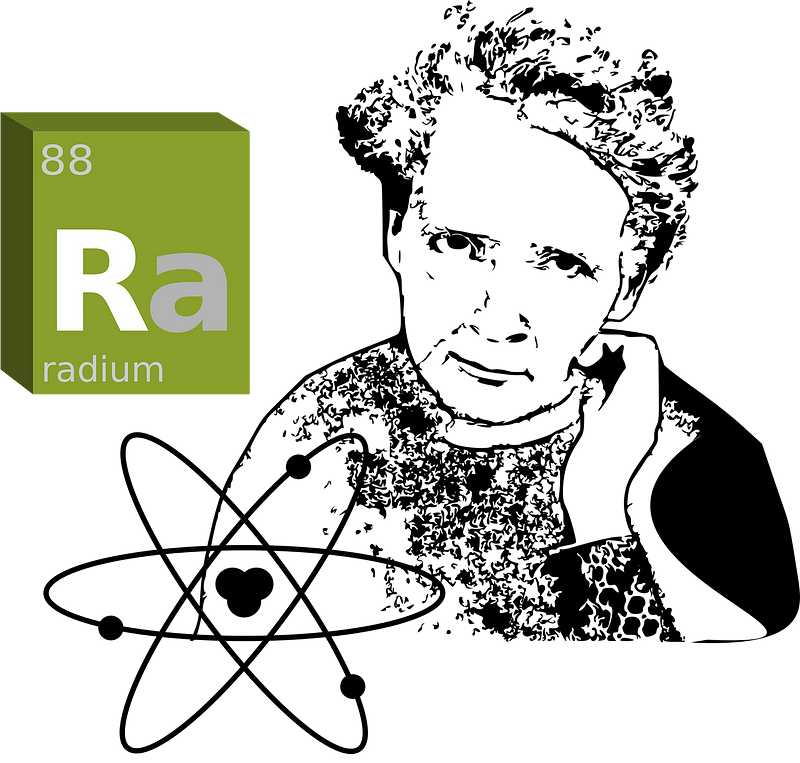The Dark Legacy of Radium and the Courage of the Radium Girls
Written on
Chapter 1: Understanding Radium
Radium is a heavy element with the atomic number 88, known for having 33 distinct isotopes, all of which exhibit radioactivity. This implies that these isotopes are unstable and will emit radiation in an attempt to achieve stability, which poses significant health risks.
The discovery of radioactivity was a serendipitous event by French physicist Henri Becquerel. Throughout the early 1900s, numerous scientists, including the renowned Marie Curie, worked diligently to understand this phenomenon. Curie stands out as a prominent figure in science, being the first woman to win a Nobel Prize, the first to be awarded twice, and the only individual to receive Nobel recognition in two different scientific disciplines.
In 1898, Marie Curie and her husband Pierre identified radium, a substance celebrated for its ability to emit rays of energy. However, during Curie’s lifetime, the full implications of radiation hazards were not yet comprehended. Despite her groundbreaking research, Curie did not strictly follow safety protocols when handling radioactive substances, believing in radium's potential as a treatment for ailments like cancer.
Section 1.1: The Rise of Radium
In the early 20th century, radium became a sensational topic in the United States. Its glowing properties led to its incorporation in various everyday products, especially in military applications, with radium paint used on items like watches and signs. This sparked a belief that consuming radium could be beneficial for health.
The Radium Girls were a collective of female factory workers tasked with painting watch dials using radium paint. Misled by their employers who claimed the paint was safe, these women were encouraged to shape their brushes with their lips, leading to the ingestion of radium particles daily.
One notable company involved was the U.S. Radium Corporation (USRC), which supplied luminous watches during World War I. The demand resulted in extended work hours for these women, and, as documented in Kate Moore's book, The Radium Girls, the workers' clothing would glow due to radium exposure. Despite attempts to remove the radium dust, many women, like Grace Fryer, humorously noted that even their nasal discharge took on a green luminescence.
Subsection 1.1.1: The Tragic Outcomes

Tragically, many of the Radium Girls succumbed to the effects of radium poisoning within a decade of their employment. One of the most harrowing cases was Mollie Maggia, whose lower jawbone fractured during a routine dental examination. Her dentist was taken aback when he had to remove her jawbone piece by piece due to severe necrosis.
Numerous other Radium Girls faced ailments like anemia, bone fractures, infertility, and cancer. By 1927, over 50 women had died from radium-related conditions.
Section 1.2: Fighting for Justice
In 1927, a bra